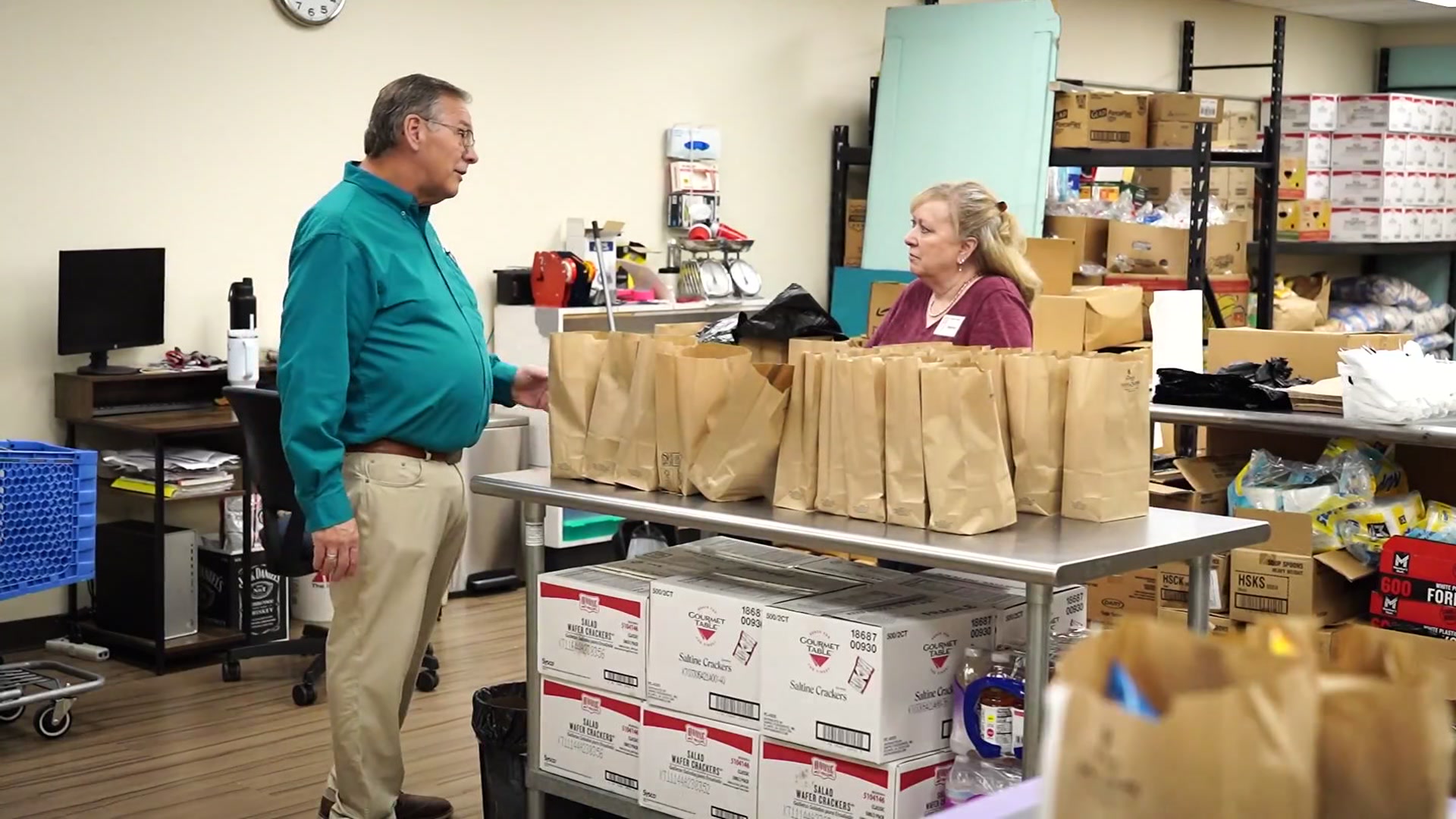Wildfires aren’t just a rural threat. NBC 5’s Diana Zoga reports on the risks and what experts say you should know.
Wildfires in Los Angeles County in January serve as a reminder that Texas is no stranger to destructive grassfires and wildfires. Fires in the Texas panhandle killed two people and destroyed hundreds of homes last year. In 2022, a grassfire raced across a field and destroyed nearly three dozen homes in Balch Springs.
Do you know your area’s fire risk? The answer may surprise you. Read on for what experts want you to know.
Watch NBC 5 free wherever you are
A COLLECTIVE EFFORT
An hour’s drive from downtown Fort Worth, Laura Jones calls the rolling landscape in Palo Pinto County home.
Get top local stories in DFW delivered to you every morning with NBC DFW's News Headlines newsletter.
“Dark skies, no traffic, beautiful land,” Jones said of the area. “A lot of wildlife and clean air.”
Jones moved to her property near Gordon from Arlington and finished building the house in April 2011. At the same time, the Possum Kingdom Complex fire broke out and burned. According to the Texas A&M Forest Service, the fires burned 168 homes in Palo Pinto, Young and Stephens counties.
“We chose not to move in for a month because we could not get homeowners insurance,” Jones said. “The carriers were not writing insurance for homes in the county at that time because of Possum Kingdom.”
Jones said she eventually got a policy and took action, creating “defensible space” or a fire-resistant buffer around the house. Jones took several steps, including using river rock and pebbles in place of wood mulch to landscape. The gutters on the home are regularly cleared of dead leaves and other debris. The grass around the home is trimmed and trees are pruned back.
“It's a big wake-up call,” Jones said. “I think that's one of the huge reasons our neighbors, we really started looking at how do we mitigate the risk? How do we take control of that as best we can?”
Jones said many neighbors are taking steps recommended by the National Fire Protection Association to maintain a Firewise USA site certification. It encourages communities to band together to reduce risk.
That’s what city officials in Lucas, just east of Allen in Collin County, aim to do. The entire town is a Firewise USA site, a designation that offers resources for neighbors to collectively reduce risk.
“In North Texas, everyone knows we have wind. A drought, fire and wind, that's just a recipe for disaster,” said Lucas Mayor Dusty Kuykendall. “Whatever we can do to protect our own house helps us protect our neighbor's house and helps our fire department, which we're standing on right now, attack the situation on a single one-off basis.”
Lucas Fire Chief Ted Stephens said it’s often small changes each individual makes that can keep a fire from spreading.
“The more communication and the more conversation, the more education you give, it's kind of like, well, that does make sense,” Stephens said of the community outreach.
WHY DO SOME HOMES SURVIVE WILDFIRES?
Many elements impact how wildfires spread, including topography and weather conditions. Experts in the field also point to characteristics of a home or neighborhood and how susceptible they are to fire.
This demonstration, covered by NBC Responds in the California Bay Area, shows firefighters trying to light two tiny homes on fire. One has wood siding, mulch in the garden and open eaves under the roof. The other tiny house was built with fire-resistant siding, sealed eaves and a metal fence where it meets the home. There is a fire-resistant buffer with five feet of defensible space around the house.
When firefighters set small fires in front of each home, flames reach a shrub next to the traditional tiny home. The fire eventually follows the wooden fence to the house, which burns down. Next door, the fire did not make it past the defensible space surrounding the wildfire-prepared home.
“You can almost see the light bulbs turn on their head of like, whoa, that looks like my house,” said Adam Turner with the Texas A&M Forest Service.
Turner said demonstrations, like the one in California, highlight factors that may determine if a home survives a wildfire. Turner told NBC 5 Responds that while many may think of a wall of fire destroying homes, firefighters say the key threat is small pieces of airborne debris. The embers can land and smolder in places like woodpiles, patio cushions or slip into attic and foundation vents.
“Most home losses occur because of ember wash,” Turner said. “The little, small pieces of burning material that you see floating through the air, those can travel quite a long way. They can sometimes go up to a mile.”
Turner said homes in the Wildland-Urban Interface, where developed areas meet undeveloped land, are particularly susceptible.
According to the Texas Wildfire Risk Explorer, much of metro DFW shows minimal direct wildfire impacts. Users can search their address to see the risk in their area. Once you zoom into the map, you can see specific neighborhoods, even in populated Dallas County, where the wildfire impact is categorized as high. Using the explorer, we could see leafy streets in the suburbs with moderate to high potential wildfire impacts.
“If you back up to a pasture or have undeveloped land near you, that's a chance there might be a fire that starts there and it could move into your communities,” said Turner. “If you have green space around you, this is something you should probably be thinking about.”
HOW TO HARDEN A HOME
There are ways to construct a more fire-resistant or hardened home with masonry, metal, cement board, double pane and tempered glass windows. For existing homes, the Texas Forest Service said even basic maintenance can help.
Remove flammable material from exterior walls, and get rid of debris stored under decks or porches. Replace loose roof shingles and clear dead leaves from gutters and roofs. The Texas Forest Service recommends attic and foundation vents have 1/8-inch metal screens to help trap embers.
Turner said if you can’t move shrubs or plants further from your home’s exterior, keep the greenery trimmed below your windows. That step is especially important in homes with single-pane windows. If plants next to a window catch fire, the heat could shatter glass and the fire can spread into the home.
You can see more home hardening tips from the Texas A&M Forest Service here. You can read suggestions from the NFPA here.
We wanted to know: could Texans who reduce their home’s fire risk see lower insurance premiums? The Insurance Council of Texas said you can ask about savings though, more likely, it could make a difference if you’re struggling to find a company to write a policy.
“Maybe it's not a discount; maybe it's a matter of whether or not you qualify for insurance. It's also just mitigating the fact of having to make a claim,” said ICT Spokesperson Rich Johnson.
As Texas’ population grows and more people potentially move into the Wildland Urban Interface, Jones recommends anyone watching understand the wildfire risk and make a plan.
“I'm accepting risk by living here,” Jones said. “It's incumbent on me to mitigate that risk to the very best I can.”
NBC 5 Responds is committed to researching your concerns and recovering your money. Our goal is to get you answers and, if possible, solutions and a resolution. Call us at 844-5RESPND (844-573-7763) or fill out our customer complaint form.
Get top local stories in DFW delivered to you every morning. Sign up for NBC DFW's News Headlines newsletter.



